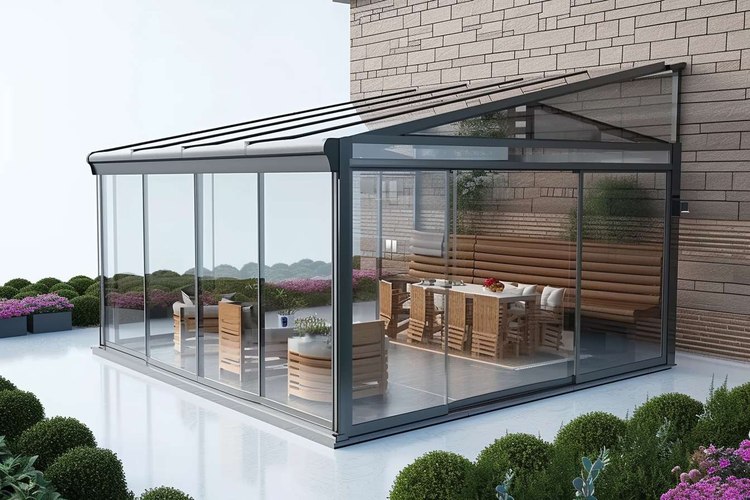Waterwise Landscaping Ideas for Drought-Prone Areas
Practical waterwise landscaping can transform outdoor spaces in drought-prone areas into resilient, attractive places. This article explores creative strategies—from upcycling materials to smart plant choices—that reduce water use while enhancing patios, terraces, and gardens.

Dry climates demand intentional design. Waterwise landscaping focuses on reducing irrigation needs while maintaining function and beauty in patios, terraces, and gardens. By combining soil-smart practices, drought-tolerant plants, thoughtful lighting and storage solutions, and small DIY projects, homeowners can create outdoor spaces that save water, cut maintenance, and fit a modest budget. This article covers practical ideas—from upcycling materials for decor to selecting container plants and mulch strategies—that work for a range of outdoor scales and interior-adjacent terraces.
How can upcycling and repurposing help landscaping?
Upcycling and repurposing give new life to old items as decorative and functional landscape features. Convert pallets into raised beds, transform clay pots into vertical planters, or repurpose gutters as narrow container gardens for herbs. These approaches reduce waste, cut material costs, and allow for creative decor that complements waterwise design. Use durable finishes suitable for outdoor use and ensure containers provide drainage so soil moisture remains balanced. Upcycled elements also allow for modular rearrangement, making it easier to adjust layouts as seasonal needs or water restrictions change.
What are practical DIY solutions for patios and terraces?
DIY projects can significantly improve water efficiency on patios and terraces. Build permeable paving from gravel and stepping stones to reduce runoff, or install a rain barrel under roof downspouts to capture water for container plants. Simple border beds with drought-tolerant groundcovers soften hard edges while minimizing irrigation. For small terraces, create a layered planting scheme with deep-rooted shrubs and shallow-rooted succulents to optimize water use. DIY trellises from reclaimed wood can support shade vines, lowering temperatures and reducing evaporation in adjacent planters.
How does sustainability shape plant and soil choices?
Sustainability in waterwise landscaping starts with soil health and plant selection. Improving soil organic matter increases water retention and reduces the need for frequent irrigation. Incorporate compost and local mulch to build structure and suppress weeds. Choose native and drought-tolerant species adapted to your climate; they generally require less supplemental water and fewer inputs. Group plants with similar water needs into hydrozones to avoid overwatering. Sustainability also means planning for long-term maintenance that conserves resources and supports local biodiversity.
Which plants and container strategies conserve water?
Selecting the right plants and container strategies is key for conserving water. Opt for species such as Mediterranean herbs, many succulents, and certain ornamental grasses that tolerate dry periods. In containers, use well-draining potting mixes amended with moisture-retentive materials like coconut coir or compost. Larger containers reduce drying frequency by holding more moisture; group containers together to create microclimates that slow evaporation. Consider self-watering planters or sub-irrigation systems for patios to deliver water efficiently to roots without waste.
How can lighting, decor, and storage support a waterwise layout?
Outdoor lighting and decor choices can complement waterwise goals. Use solar-powered or low-voltage LED fixtures to reduce electrical needs and avoid landscape features that require water, such as uninclosed fountains. Position storage for tools and mulches near planting areas to simplify regular upkeep and reduce time spent watering unnecessarily. Decorative gravel beds and permeable hardscapes offer low-maintenance alternatives to turf while providing a clean aesthetic that highlights container arrangements and seasonal plantings.
What maintenance and seasonal practices minimize water use?
Routine maintenance keeps a waterwise landscape efficient. Regularly check irrigation systems for leaks and adjust timers seasonally to reflect plant dormancy and rainfall. Mulch beds to maintain soil moisture and suppress weeds that compete for water. Prune to reduce plant stress and remove diseased growth that demands extra care. During cooler months, reduce watering frequency and use rain sensors or soil moisture probes to guide irrigation. Planning for seasonal shifts—such as planting during cooler periods—reduces transplant shock and lowers initial watering needs.
Conclusion Waterwise landscaping in drought-prone areas combines practical design, plant selection, and sensible maintenance to create outdoor spaces that are attractive, resilient, and resource-efficient. By using upcycling and DIY methods, improving soil and mulch practices, choosing appropriate plants and containers, and applying targeted maintenance routines, homeowners can build landscapes that conserve water while enhancing patios, terraces, and outdoor living areas.





